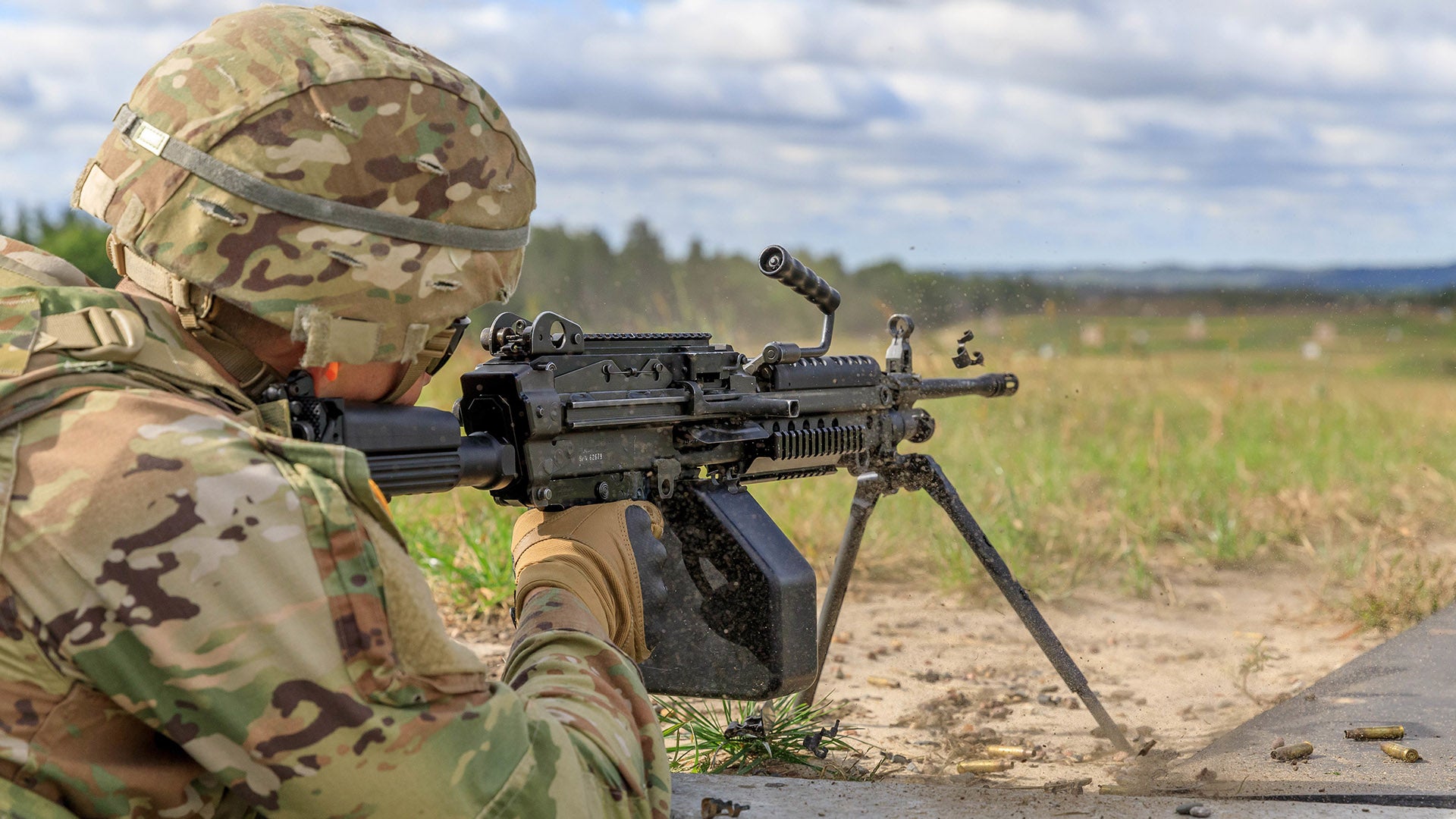
First Special Forces Command has suspended all training on ranges that use live and blank ammunition after a soldier was accidentally shot by an M249 squad automatic weapon during an April 25 training event, military officials said.
The 7th Infantry Division soldier who was shot is listed in stable condition and is currently being treated at Madigan Army Medical Center, said Lt. Col. Jennifer Bocanegra, a spokeswoman for I Corps.
“Our thoughts are with the soldier and their family during this difficult time,” Bocanegra told Task & Purpose. “The incident remains under investigation.”
The 72-hour stand down began on Tuesday and it affects all Special Forces, Civil Affairs, and Psychological Operations soldiers under 1st Special Forces Command, said Maj. Russell M. Gordon, a spokesman for the command.
All 1st Special Forces Command ranges have been closed since May 2, Gordon told Task & Purpose. The stand down will allow units to do a deep dive on safety procedures.
Subscribe to Task & Purpose today. Get the latest military news and culture in your inbox daily.
“Each subordinate unit will initiate a 24-hour amnesty turn-in period of any improperly stored ammunition followed by a complete inventory of all arms rooms ammunition storage locations,” Gordon said. “Unit leaders will complete a review of all storage, handling, and range safety responsibilities at the lowest level to ensure compliance with policies. Although an investigation is underway on the exact circumstances of the incident, it was necessary to take prudent action now to ensure the safety and well being of everyone.”
The April 25 mishap occurred during a training event at Joint Base Lewis-McChord, Washington. Investigators are looking into how live rounds got onto the range.
Military.com first reported that a soldier was accidently shot after live ammunition was mixed with blanks during force-on-force training. It is unclear to which unit the soldier who fired the live ammunition is assigned.
Both officers and enlisted leaders have a role in making sure that soldiers never mix live ammunition with blanks during training events, said retired Army Col. Keith Nightingale, a member of the Ranger Hall of Fame who also helped plan the U.S. military’s 1980 attempted rescue of American hostages in Iran.
“You never draw both live and blank ammunition at the same time,” Nightingale told Task & Purpose. “You have a separate order for ball ammo, and you would have a separate order for blank.”
Officers are responsible for making sure their soldiers are not accidentally issued live rounds, and the noncommissioned officers who draw ammunition for units only issue live or blank rounds – not both, Nightingale said.
Soldiers who are issued blanks also have a blank adaptor on their weapons and they are briefed about making sure there are no live rounds included with their blank ammo, he said.
Nightingale remembers one incident during his Army career when a soldier was caught mixing live ammunition with blanks. That soldier was booted from the service.
“All through the chain of command – the company, the platoon sergeant, the squad leader – they’re all trained, or should be trained, in never mixing the two,” Nightingale said. “In units that I’ve been associated with, normally, the platoon sergeant or the first sergeant would make sure that all of the ammunition is of the same configuration and would not mix the two. It’s almost a sacrosanct policy: Don’t mix ball and blank ammo.”
